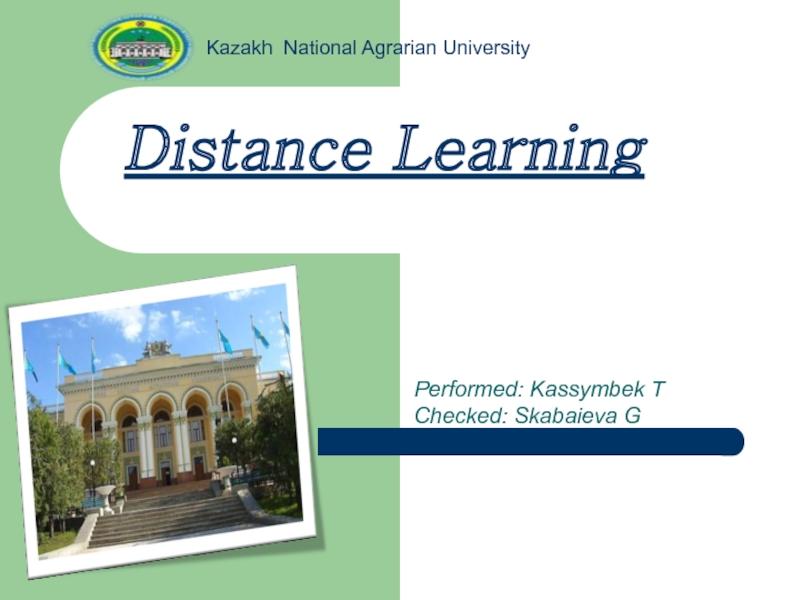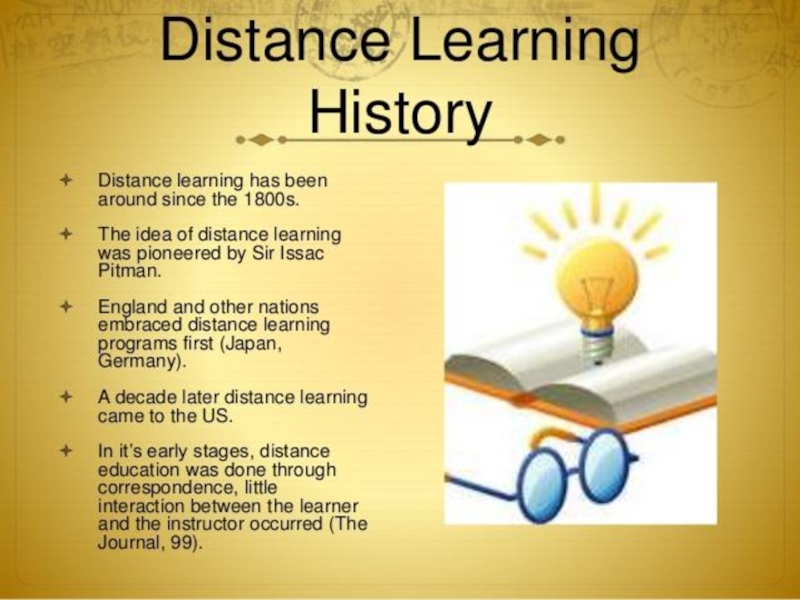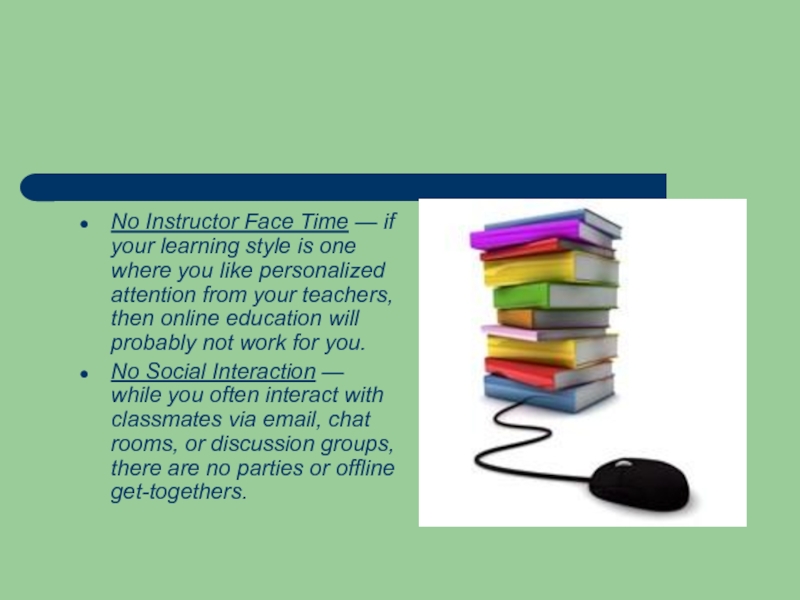Разделы презентаций
- Разное
- Английский язык
- Астрономия
- Алгебра
- Биология
- География
- Геометрия
- Детские презентации
- Информатика
- История
- Литература
- Математика
- Медицина
- Менеджмент
- Музыка
- МХК
- Немецкий язык
- ОБЖ
- Обществознание
- Окружающий мир
- Педагогика
- Русский язык
- Технология
- Физика
- Философия
- Химия
- Шаблоны, картинки для презентаций
- Экология
- Экономика
- Юриспруденция
Distance Learning
Содержание
- 1. Distance Learning
- 2. Слайд 2
- 3. Distance learning is designed to provide educational
- 4. There are some pros and cons of distance learning.
- 5. Distance Learning Pros: Convenience Flexibility Availability Cost Accessibility No Travel Expenses No Interrupting Job/Career
- 6. Convenience — take online courses when you need
- 7. Accessibility — with an online course, you can
- 8. Distance Learning Cons:No Instructor Face Time No
- 9. No Instructor Face Time — if your learning
- 10. Requires New Skills/Technologies — if you’re are afraid
- 11. The needs of distance learners 1. Connect
- 12. ConclusionDistance learning is relevant. The number of
- 13. Thank you for your attention!
- 14. Скачать презентанцию
Distance learning is designed to provide educational opportunities to students who are unable to pursue on-site study. Written correspondence courses, online classes and other remote classroom delivery methods fall under the
Слайды и текст этой презентации
Слайд 1Distance Learning
Performed: Kassymbek T
Checked: Skabaieva G
Kazakh National Agrarian
University
Слайд 3Distance learning is designed to provide educational opportunities to students
who are unable to pursue on-site study. Written correspondence courses,
online classes and other remote classroom delivery methods fall under the category of distance learning.Слайд 5Distance Learning Pros:
Convenience
Flexibility
Availability
Cost
Accessibility
No Travel
Expenses
No Interrupting Job/Career
Слайд 6Convenience — take online courses when you need them, not based
on some college’s annual or semester schedule. A course is
as close as a computer with an Internet connection.Flexibility — with no set class times, you decide when to complete your assignments and readings. You set the pace. In some programs, you can even design your own degree plan.
Availability — distance-learning opportunities have exploded over the past few years, with many accredited and reputable programs.
Cost — prices are often cheaper for online courses than traditional college and trade courses — with no housing or meals plans to worry about.
Слайд 7Accessibility — with an online course, you can work on the
course just about anywhere you have computer access.
No Travel
Expenses — you may never even have to leave your house to take an online course, and certainly there are no relocation costs. No Interrupting Job/Career — because distance learning courses are located in cyberspace and controlled by your pace, there is no need to quit your current job.
Слайд 8Distance Learning Cons:
No Instructor Face Time
No Social Interaction
Requires
New Skills/Technologies
Making Time
No Campus Atmosphere
Слайд 9No Instructor Face Time — if your learning style is one
where you like personalized attention from your teachers, then online
education will probably not work for you.No Social Interaction — while you often interact with classmates via email, chat rooms, or discussion groups, there are no parties or offline get-togethers.
Слайд 10Requires New Skills/Technologies — if you’re are afraid of change or
new technologies, then online education will probably not work for
you.Making Time — if you are one of those people who always needs an extra push to complete work, you may have a hard time making time for your online classes.
No Campus Atmosphere — part of the traditional college experience, of course, is the beauty of the campus, the college spirit — but you have none of that with distance-education courses.
Слайд 11The needs of distance learners
1. Connect what you learn with
previous knowledge and experience
2. Don’t skip online classes and submit
your homework in time3. Computer Skills
4. Available Resources
































